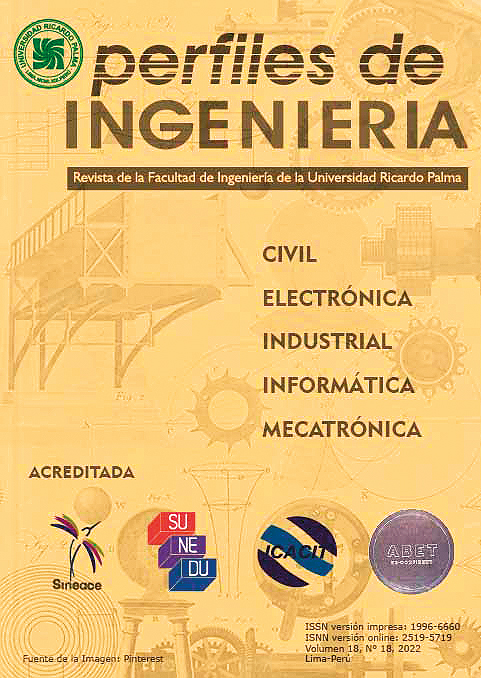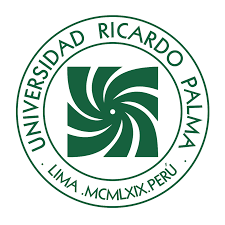Planning and simulation of the trajectory of a robot with 6 degrees of freedom for mig type welding of cylindrical tanks
DOI:
https://doi.org/10.31381/perfilesingenieria.v18i18.5407Keywords:
MIG, trajectory, manipulator, interpolation, weldingAbstract
The current work focuses on the modeling of an Anthropomorphic robot with 6 degrees of freedom and its subsequent kinematic control for Metal Inert Gas (MIG) welding of cylindrical fermentation tanks. This robot has 4 links and 6 joints, three of them for the positioning of the arm and the others for the orientation of the wrist. Using SolidWorks program, the robot was designed considering the workspace and the standard measurement of cylinder tanks. The robot performs circular welding for the lid or base of a tank with a diameter of 1100 mm. The path points were predetermined by the designer and the user defines the sampling points for polynomial interpolation in order to make a smooth and controlled tracking of the robot manipulator welding path. The proposal and simulation of the project will allow carrying out and planning future work in which these automated welding techniques are used not only in tanks but also in manufacturing of elements from machines more complex inside of food industries like axle and idler welding for conveyor machines at the metalworking Trujillo Industry.
Downloads
References
D. F. Uribe and E. Sánchez, “Diseño de Robot Soldador de bajo Coste”, Trabajo de Grado, Universidad Autónoma de Occidente, Santiago de Cali, 2019.
C. O. Crisanto, “Automatización de un robot cartesiano para el proceso de soldadura lineal MIG”, Trabajo de Grado, Escuela Politécnica Nacional, Quito, 2013.
A. Barrientos, L. Peñin, C. Balaguer, R. Aracil. “Fundamentos De Robótica”, 2° ed. Madrid: McGraw-Hill, 2007.
L. A. Morales, N. Sotomayor and Y. Boada, “Control de seguimiento de trayectoria y paletización de un robot de tres grados de libertad tipo SCARA (Selective Compliance Assembly Robot Arm)”, Revista Politécnica, vol. 33, Núm. 1, febrero 2014.
J. Soto, J. Vargas and J. Pedraza, “Generación de Trayectorias por Visión para un Robot Manipulador de 5 Grados de Libertad”, M.S. Thesis, CIDESI, Santiago de Queretaro, México, 2005.
N. Giraldo, and G. Patiño, “Análisis cinemático e instrumentación virtual 3D para el brazo robótico Pegasus II”, Revista chilena de ingeniería, vol. 27, Núm. 4, diciembre 2019.
J. Archila, and M. Suell, “Estudio y modelamiento del robot KUKA KR 6”. Revista Facultad de Ingeniería Universidad de Antioquia, Núm. 46, pp. 132-144, diciembre 2008.
J. Huanca, J. Zamora, J. Cornejo and R. Palomares, "Mechatronic Design and Kinematic Analysis of 8 DOF Serial Robot Manipulator to Perform Electrostatic Spray Painting Process on Electrical Panels," 2022 IEEE Engineering International Research Conference (EIRCON), 2022, pp. 1-4, doi: 10.1109/EIRCON56026.2022.9934104.
O. Mejia, D. Nuñez, J. Rázuri, J. Cornejo and R. Palomares, "Mechatronics Design and Kinematic Simulation of 5 DOF Serial Robot Manipulator for Soldering THT Electronic Components in Printed Circuit Boards," 2022 First International Conference on Electrical, Electronics, Information and Communication Technologies (ICEEICT), 2022, pp. 1-7, doi: 10.1109/ICEEICT53079.2022.9768447.
Downloads
Published
How to Cite
Issue
Section
License
Copyright (c) 2022 Perfiles de Ingeniería

This work is licensed under a Creative Commons Attribution 4.0 International License.
In the event that the manuscript is approved for its next publication, the authors retain the copyright and assign to the journal the right of publication, edition, reproduction, distribution, exhibition and communication in the country of origin, as well as in the abroad, through print and electronic media in different databases. Therefore, it is established that after the publication of the articles, the authors may make other types of independent or additional agreements for the non-exclusive dissemination of the version of the article published in this journal (publication in books or institutional repositories), provided that it is explicitly indicated that the work has been published for the first time in this journal.
To record this procedure, the author must complete the following forms:

1.png)








